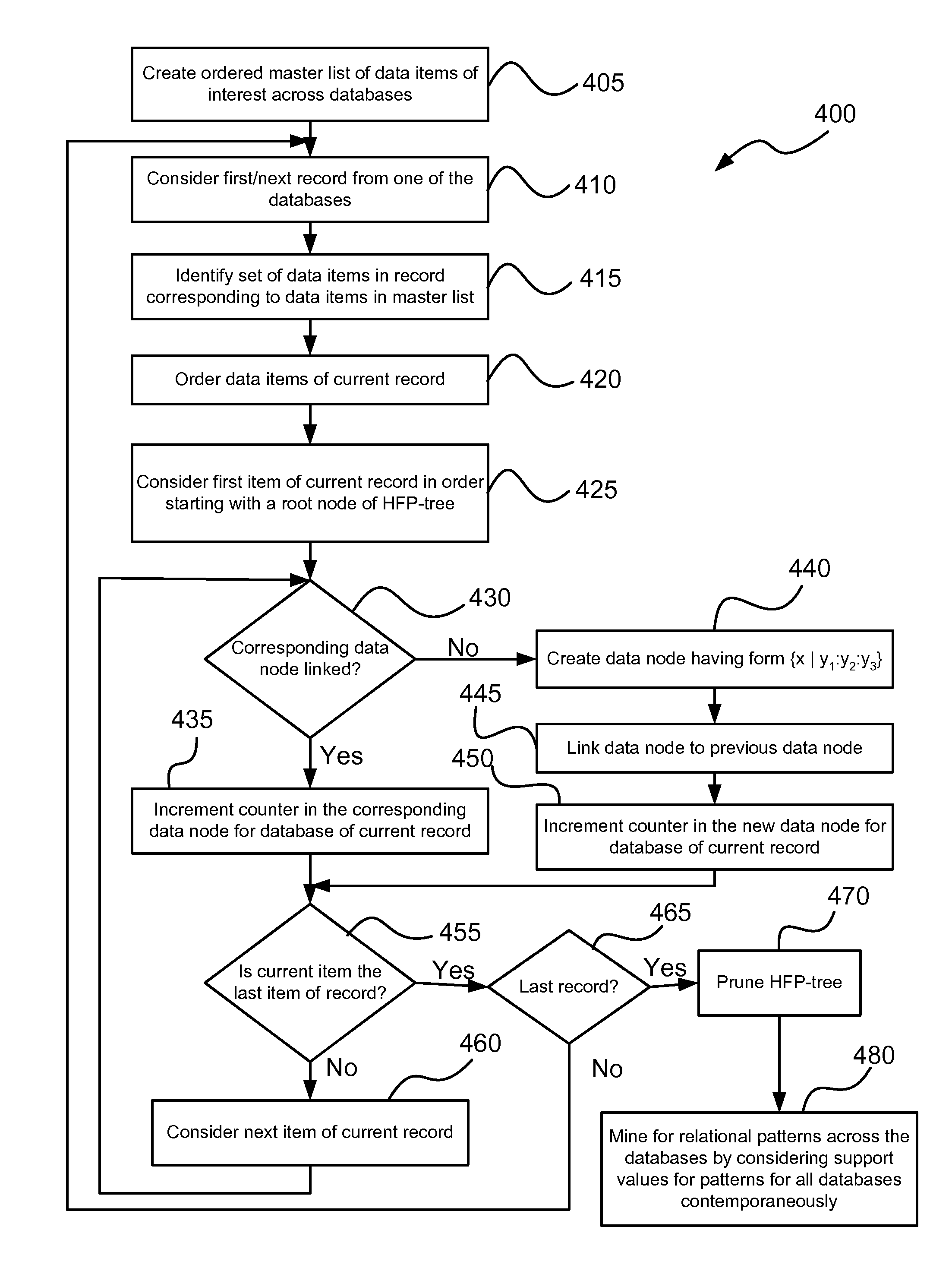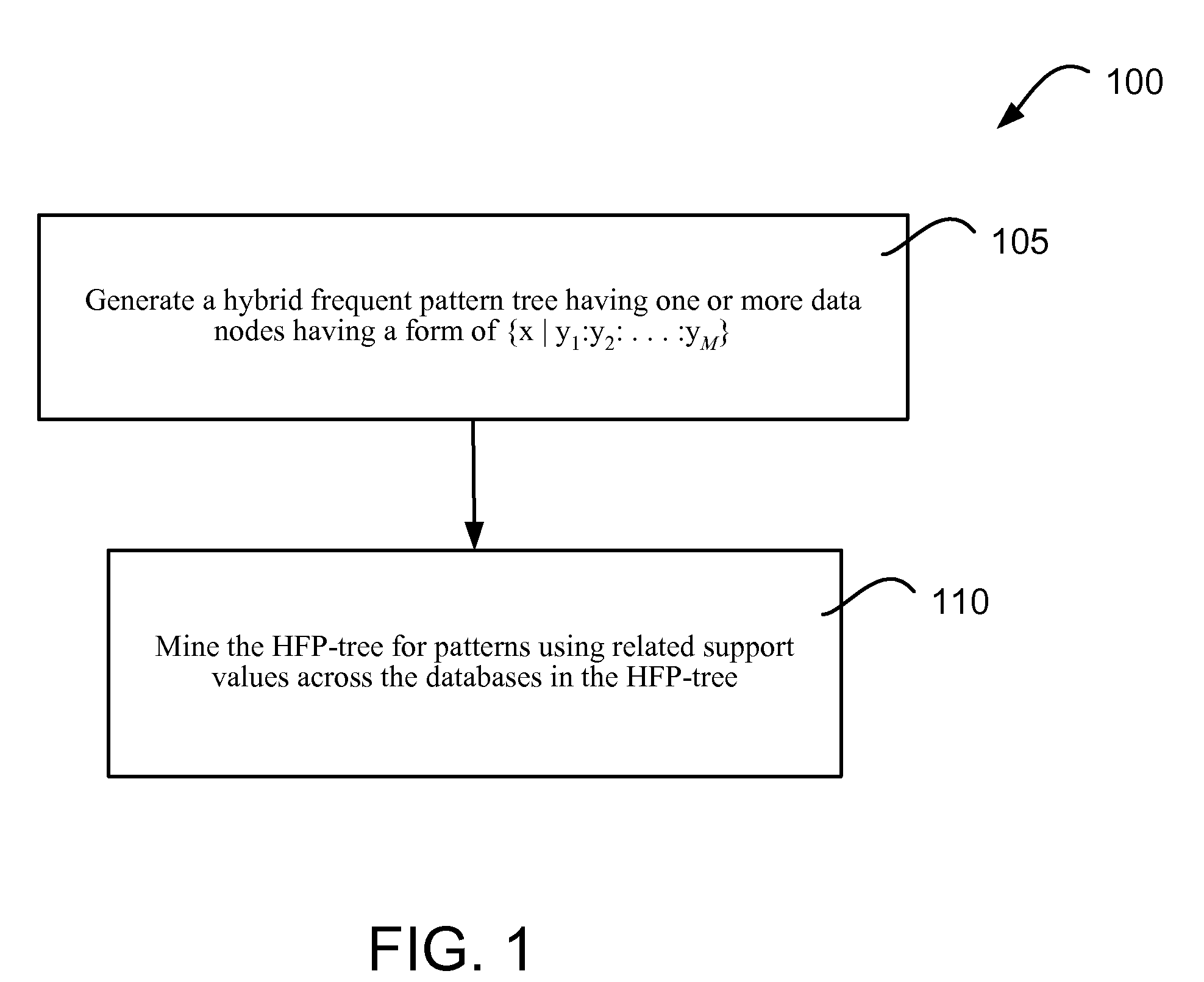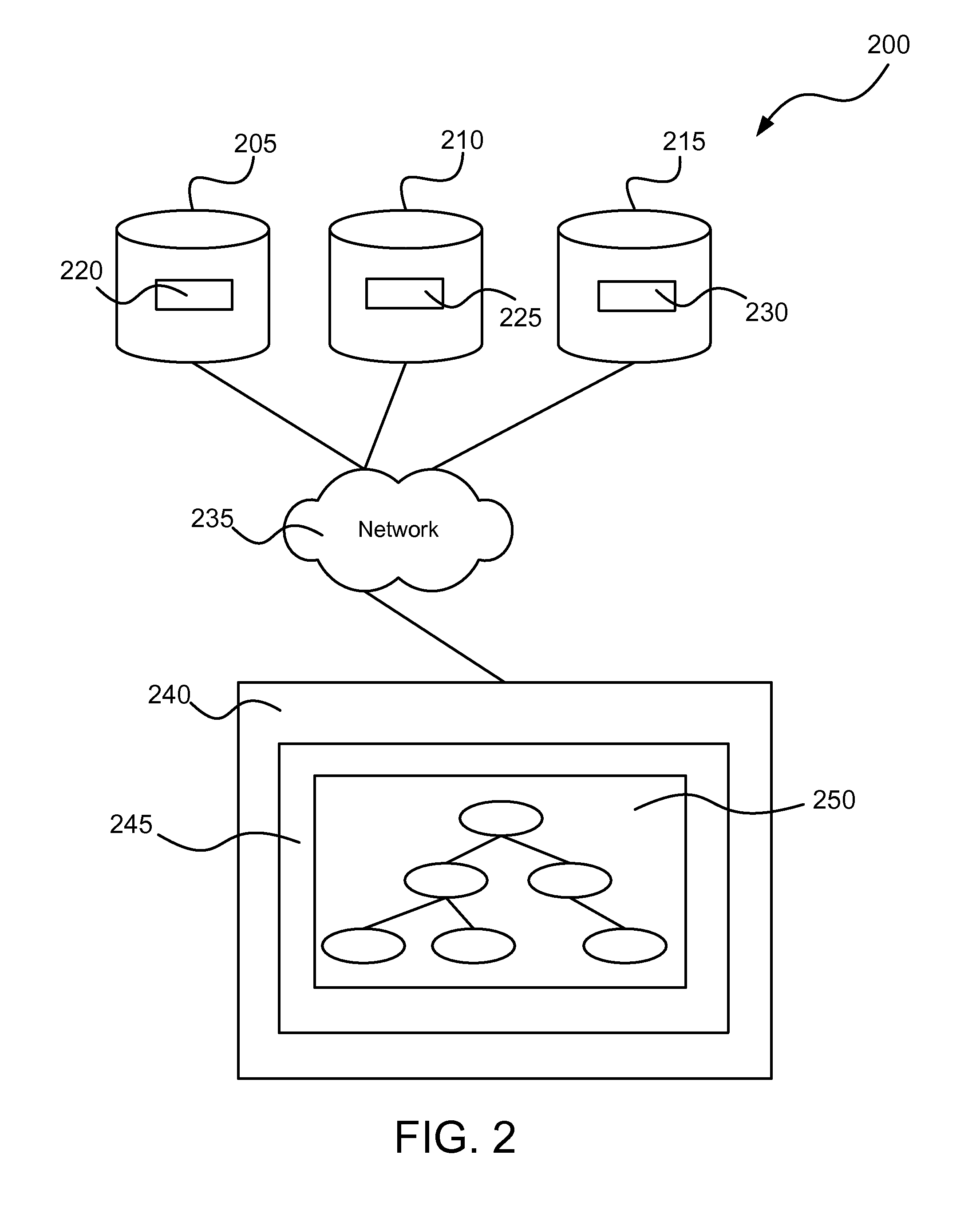Relational Pattern Discovery Across Multiple Databases
a technology of relational pattern discovery and databases, applied in the field of database pattern mining, can solve the problems that the methods of finding patterns in multiple databases have difficulty in applying complex queries across databases
- Summary
- Abstract
- Description
- Claims
- Application Information
AI Technical Summary
Benefits of technology
Problems solved by technology
Method used
Image
Examples
experimental examples
[0118]Several experimental evaluations and a comparative study with two simple solution based relational-pattern discovery mechanisms were conducted. The test datasets were collected from two sources: (1) synthetic databases generated by using an IBM Quest data generator; and (2) the IPUMS (Integrated Public Use Microdata Series) 2000 USA census micro-data with 1% sampling rate. All of the experiments were performed on a 2.0 GHz Pentium PC machine with 512 MB main memory. All of the programs (e.g., machine executable instructions) were written in C++, with the integration of an STL-like C++ tree class to fulfill the tree construction and access. A system and / or method of discovering relational patterns from multiple databases using an HFP-tree as disclosed above is referred to as DRAMA (Discovering Relational patterns Across Multiple dAtabases) in the following discussions of experimental examples. Although it is possible for DRAMA to reuse a previously constructed HFP-tree to answe...
PUM
 Login to View More
Login to View More Abstract
Description
Claims
Application Information
 Login to View More
Login to View More - R&D
- Intellectual Property
- Life Sciences
- Materials
- Tech Scout
- Unparalleled Data Quality
- Higher Quality Content
- 60% Fewer Hallucinations
Browse by: Latest US Patents, China's latest patents, Technical Efficacy Thesaurus, Application Domain, Technology Topic, Popular Technical Reports.
© 2025 PatSnap. All rights reserved.Legal|Privacy policy|Modern Slavery Act Transparency Statement|Sitemap|About US| Contact US: help@patsnap.com



